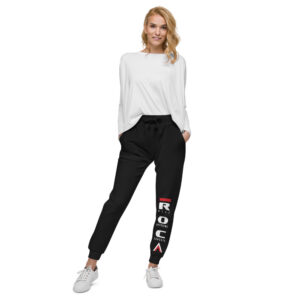Third Time Lucky: How I Conquered WordPress
I remember the day I decided to take on WordPress. It was a daunting yet exciting challenge and one that I had been putting off for far too long. After much research and many hours spent tinkering with settings, I finally figured out WordPress. It was an exhilarating feeling of accomplishment, but it wasn’t easy getting there. In this blog post, I’m going to share my journey of conquering WordPress and provide some tips on how you can do the same. So if you’re ready to take the plunge into the world of WordPress, keep reading!
Why WordPress?
WordPress is the most popular content management system (CMS) on the internet. It powers over 30% of all websites. That’s a lot of sites!
Why is WordPress so popular?
First, WordPress is free and open source. That means anyone can use it and contribute to its development. Second, WordPress is very easy to use. You don’t need to be a tech expert to create a website with WordPress. Third, there are tons of resources available for WordPress. If you need help, you can find it online or from the WordPress community. And fourth, WordPress is flexible. You can create any kind of website with WordPress – from a simple blog to a complex eCommerce site.
So if you’re looking to create a website, WordPress should be your first choice. It’s the third time lucky how i conquered WordPress for me – I finally conquered WordPress!
What is WordPress?
WordPress is a content management system (CMS) that enables you to create a website or blog from scratch or to improve an existing website. It’s free and open-source software released under the GPL.
WordPress is used by millions of people around the world, including many large organizations, such as The Guardian, Forbes, and The New York Times.
WordPress is a very versatile platform and can be used for a wide variety of websites and applications. For example, you can use WordPress to create:
-A blog or personal website
-A corporate website or company intranet
-An online magazine or news site
-An eCommerce website or online store
-A directory or listings site
-A portfolio site for artists, photographers, writers, or designers
-A social network
-And much more!
The Different Types of WordPress Sites
There are a few different types of WordPress sites:
1. Personal Blogs
These are usually run by individuals who just want to share their thoughts and ideas with the world. They’re not too concerned about making money from their site, although some do generate revenue through ads or affiliate links.
2. Business Websites
Many businesses use WordPress to build their websites because it’s an easy and cost-effective way to get online. These sites often have eCommerce functionality so that they can sell products and services directly to customers.
3. Portfolios
Artists, photographers, and other creative professionals often use WordPress to showcase their work. These sites typically have large images and sleek designs that make them stand out from the crowd.
4. News Sites
WordPress is also popular among news organizations because it allows them to publish articles quickly and easily. These sites generally have a lot of content and several different sections (e.g., sports, weather, etc.).
Pros and Cons of WordPress
WordPress is a popular content management system (CMS) that allows users to create a website or blog from scratch, or to improve an existing site. There are many pros and cons of using WordPress, which we will explore in this article.
PROS:
-WordPress is free and open-source software released under the GPL.
-There is a large community of users, developers, and designers who contribute to the project, which makes it constantly evolving and improving.
-WordPress is easy to use and learn for beginners, yet has plenty of features and flexibility for more advanced users.
-You can find themes and plugins for almost anything you want to add to your site, from ecommerce to social media integration.
-Wordpress sites are relatively easy to maintain compared to other types of sites.
CONS:
-Because WordPress is so popular, it is a target for hackers and malware. Be sure to keep your site updated and secure.
-Themes and plugins can sometimes conflict with each other or with the core WordPress code, causing errors or instability on your site.
How to Use WordPress
If you’re new to WordPress, the first thing you need to do is create a account and choose a password. Once you have an account, you can start creating content.
There are two ways to create content in WordPress: using the visual editor, or writing code. The visual editor is similar to a word processor, and is great for creating simple pages and posts. If you want more control over your content, or want to add features like images or videos, you’ll need to use code.
Don’t worry if you’re not a coder! WordPress is designed so that anyone can use it, regardless of technical skill level. There are plenty of resources available to help you learn how to use code in WordPress.
Once you’ve created some content, you’ll need to publish it so that people can see it. You can do this by clicking the “Publish” button on the page or post Editor screen.
That’s it! Now you know the basics of how to use WordPress. For more detailed instructions, be sure to check out the WordPress Codex (the online manual for WordPress).
Tips and Tricks for WordPress
If you’re new to WordPress, or even if you’re a seasoned user, there are always tips and tricks to learn. Here are some of our favorites:
-To quickly create a link to another WordPress page or post, simply highlight the text you want to link and click the “Link” button in the toolbar. A popup will appear where you can enter the URL of the page or post you want to link to.
-If you want to add an image to your post or page, click the “Add Media” button in the toolbar and upload your image from your computer. You can then adjust its size and position using the controls in the pop up window.
-Want to embed a video in your post? Just copy and paste the URL of the video into your post content and WordPress will automatically embed it for you. No need for any special code!
-If you want fine-grained control over your posts and pages, create a child theme. This will allow you to override any default WordPress templates with ones that better suit your needs. Just remember to create a backup before making any changes!
Conclusion
WordPress can be intimidating if you don’t know the basics. But with a bit of patience and practice, it doesn’t have to be such an uphill battle. I’m glad I persevered and now feel comfortable enough to create my own blog without too much stress or frustration. If you’re struggling to get started with WordPress, remember: third time’s the charm! With some dedication and determination, you’ll soon find yourself creating beautiful websites in no time.
Share this content:













